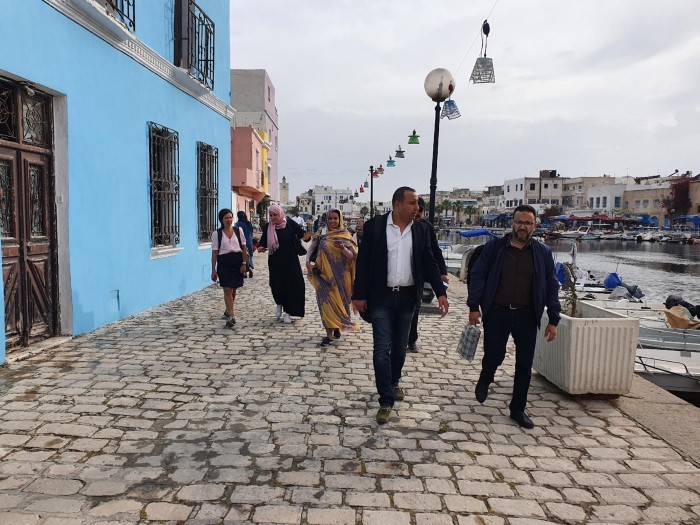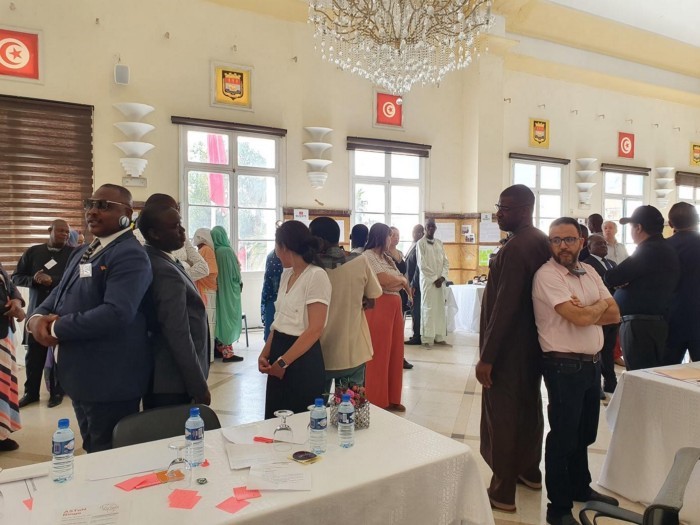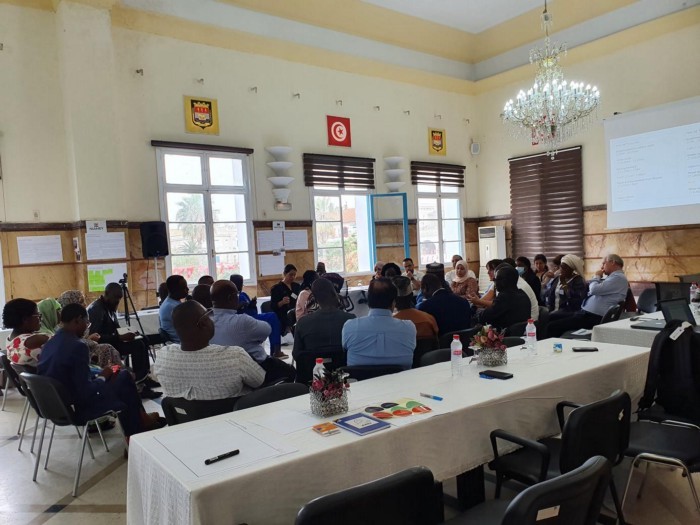ASToN city week in Bizerte: be lifted-up with ASToN energy
ASToN is a cohort of 11 cities working together to become more sustainable and inclusive through the use of digital technologies. With a combination of local and network activities, we aim to create a strong network of African cities supporting and learning from each other, to build capacity amongst local teams to confidently use digital tools and technology and to share the results and lessons from ASToN.

The life of the network is rhythmed by all-partners meetings. During these events, we organise interactive activities, using approaches and techniques of practical learning to ensure engagement and understanding of the information and tools provided. They are also occasions for cities to connect, get to know one another, and create opportunities beyond the ASToN project.
In May 2022, ASToN cities partners met in Bizerte (Tunisia) for a condensed week of sharing and learning, as 10 of the 11 ASToN cities joined the event. It was a delight to meet again in person to discuss and share our work as well as deepen our relationships.
Now that everyone is back home, back to their daily lives, it is time to reflect on some key takeaways from this insightful week we spent together.
1. In-person meetings are a momentum for our work
As an international network, most of our work and interactions happen online and it makes in-person meetings extra special.
We often say that and it was once again confirmed: meeting in person is amazing. The motivation of the ASToN local groups is no longer in question, but sometimes there are obstacles and difficulties that can slow down the local dynamic. These network-wide meetings allow us to regain strength, share our experience and get inspired. They really impulse a new energy into the network, reminding us why we do it
On that note, we like to start every day with a warm-up exercise to break the ice between participants, channel the energies for the coming day and prepare minds. It is also a privileged moment for cities, when all delegations mix and get ready to work together.

2. Experimentation can take different shapes and that’s inspiring!
This all-partner week occurred during the EXPERIMENT phase of ASToN. Experimentation is a key moment of ASToN during which cities engage in a hands-on experience of learning and adapting. Cities identify and test the riskiest element of their Local Action Plans. It allows them to revise their project and improve it before they scale up. This work is done locally and each experimentation is specific to the city’s context and plans.
During this event, we wanted to insist on the learning opportunity and the variety of shapes experimentation can take. To do so, we dedicated the first morning to experimentation with two exercises: “Reflection on experimentation” and “The Experimentation Gallery Walk”.
During the first exercise, delegations were guided through a reflection on their experimentation, focusing on their biggest uncertainties at the start, biggest learning, challenge, something they were proud of, and what they hope to gain through the experimentation. Individuals from each city discussed what they have reflected and then input their learnings into the experimentation canvas they had prepared prior to the meeting. It fostered individual and collective experimentation and reminds everyone that it is not a straight and easy path, getting things wrong, encouraging difficulties is part of the process and it should be embraced!
During the second exercise, cities presented their experimentation canva and solicited peer reviews. They had to pitch their work to the other cities and received feedback. It eventually allowed them to have new ideas of solutions, build collective intelligence and exchange their own good practices. The participants were also able to see how diverse the experimentation process can be.

3. The importance of long-term vision and adequate tools
As the project advances, cities venture their concern on what will happen after ASToN. They manifest long-term project ambitions and request for methods and tools that could equip them to make the most of ASToN after it ends.
The goal of the project is for cities to elaborate a Local Action Plan that will encapsulate their vision and an implementable way of achieving it. It is really the answer to sustainability and a means to scale-up. Cities drafted a LAP before they started their experimentation. We organised a fishbowl exercise to brainstorm on what would be the perfect LAP. The fishbowl design is intended to make it easy for people in the inside circle to share experiences while in conversation with each other, in an informal manner, breaking down the barriers between the groups as you might find on a panel. This session concluded with the statements that LAPs should be secured by political support, informed by the experimentation’s learnings and comprehensive enough to attract funders (through strong indicators for instance).
Indeed, as we look to the future for our Local Action Plans, something we know is of massive importance for all cities is to think about how you will finance these plans! To help with the reflection, we invited two speakers: Marcus Mayr, the coordinator of the Urban and Municipal Development Fund for the African Development Bank and Abi Freeman, co-founder of Brink and our Lead Expert for the ASToN programme. Both presented ways for cities to pursue funding.

4. Methods & tools will outlive the ASToN project
During the project we tried to distil methods and tools to cities as ASToN is also a capacity building project. In Bizerte, cities manifested a wider interest in capturing what they are doing and learning to ensure it lives on after ASToN. We used the different sessions to introduce them to tools and processes on:
- reflection on communication and how to build their communication strategies
- having open but structured conversations, in wide group, that would allow each person to have a voice and be taken into account
- giving and taking feedbacks in a useful and effective way
One of the network’s priorities is to provide methods and tools to reinforce local authorities’ power to achieve objectives. These work processes, we hope, can find other applications than ASToN.
5. Having fun and learning from each other cultures
An important part of this network is also the human aspect of it. The richness of a multicountry African network is that it includes many different cultures, customs and traditions.
We always take the opportunity of an all-partner meeting to be exposed to the host country culture and learn more about it. In Bizerte, we were lucky to visit the city, attend a presentation on the history of Bizerte and taste a lot of local delicacies. These moments, more informal and outside our scope of work, help building strong connections between the ASToN cities.
After this extraordinary experience we feel regarded and ready to kick up the next step of our work. As the project is coming to an end, we want to work harder to capture what we do and so we can share it with other city practitioners ! Stay tuned, more is coming !


